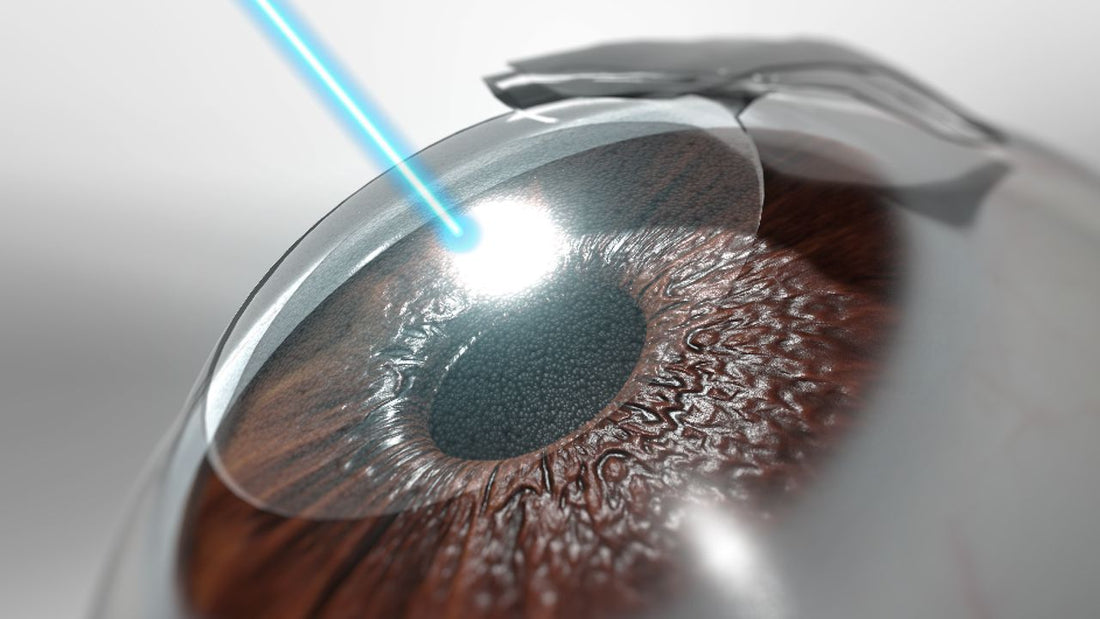Dry Eye Strategies for Lasik Patients
Protecting your eyes after Lasik is crucial for comfort and optimal healing. Learn 5 essential tips, including using EyeOasis Sleeping Tape, healthy blink habits, lubricating drops, environmental protection, and doctor guidance to reduce dryness and promote recovery.

5 Essential Tips to Protect Your Eyes After LASIK Surgery
LASIK surgery can transform your vision, but proper aftercare is essential to maintain those results and ensure long-term comfort. In the weeks following your procedure, your corneal surface remains delicate and more prone to dryness or irritation. Taking a few mindful steps each day and night can help protect your healing eyes, reduce inflammation, and prevent unnecessary setbacks. Below are five key strategies for promoting optimal recovery and keeping your eyes healthy after LASIK.
Quick Navigation
1. Use EyeOasis Sleeping Tape at Night
After LASIK, your eyes are especially vulnerable to dryness and exposure during sleep. This happens because tear production decreases significantly overnight and the corneal nerves — temporarily disrupted by surgery — take time to heal and resume normal tear signaling. Even small gaps in your eyelid closure can lead to rapid moisture loss, leaving you with redness or burning sensations in the morning.
EyeOasis Sleeping Tape is designed to provide gentle overnight eyelid closure. By softly sealing your lids, it maintains natural tear film balance and prevents dehydration. Unlike traditional sleep masks that shift or press unevenly, EyeOasis creates a reliable, breathable seal that stays in place throughout the night — even if you toss or turn.
- Retains your natural tear film and prevents moisture evaporation
- Reduces irritation, redness, and gritty sensations upon waking
- Supports healing by keeping the corneal surface protected
Many post-LASIK patients notice improved comfort and fewer episodes of dryness within days of incorporating EyeOasis into their nightly routine.
2. Practice Healthy Blink and Eye Habits
Your eyes rely on regular, complete blinking to stay lubricated. After LASIK, temporary nerve sensitivity and reduced blinking frequency — especially during screen use — can worsen dryness. Being intentional about your blinking and daily eye habits helps restore comfort and promotes faster healing.
- Blink fully and frequently: Aim for a gentle but complete eyelid closure every few seconds while working or reading.
- Follow the 20-20-20 rule: Every 20 minutes, look at something 20 feet away for at least 20 seconds to reduce strain.
- Gently massage eyelids: Using clean fingers, lightly massage along the lash line to stimulate meibomian glands and improve tear quality.
- Avoid eye rubbing: Rubbing can disturb healing tissue and increase the risk of infection or flap displacement.
These mindful habits minimize irritation and help your tear film stabilize during the healing phase.
3. Use Lubricating Drops or Ointments
Lubrication is one of the most critical elements of LASIK recovery. Artificial tears provide temporary relief and help replenish moisture while your eyes rebuild their natural tear balance. Using the right type of drops can make a substantial difference in both comfort and healing speed.
- Choose preservative-free lubricating drops to avoid chemical irritation from repeated use.
- Apply drops several times daily — especially after prolonged screen exposure or before bedtime.
- Use thicker gels or ointments overnight for long-lasting hydration and corneal protection.
- Confirm that your eye drops are safe for post-LASIK use by consulting your surgeon.
Consistent hydration helps restore clarity, reduces redness, and maintains a smooth optical surface for optimal visual recovery.
4. Protect Your Eyes from Environmental Factors
Freshly treated eyes are extra sensitive to environmental irritants. Wind, sunlight, and dry indoor air can all aggravate post-LASIK dryness. Preventing exposure is key to reducing irritation and supporting your healing process.
- Wear sunglasses outdoors: They protect against UV rays, dust, and wind that can irritate the eyes.
- Use humidifiers indoors: Maintain humidity levels around 40–60% to prevent your tear film from drying out.
- Avoid direct airflow: Steer clear of sitting or sleeping near vents, fans, or heaters that blow air toward your face.
- Limit exposure to smoke: Cigarette smoke and pollution can trigger inflammation and slow healing.
Creating a gentle, moisture-friendly environment allows your eyes to recover naturally while minimizing discomfort.
5. Follow Up With Your Eye Doctor
Regular follow-up appointments are essential for ensuring your LASIK results remain stable and your eyes heal properly. Even if you feel fine, your ophthalmologist can detect subtle signs of dryness, inflammation, or early complications that you might not notice.
- Report persistent dryness, redness, or blurred vision promptly.
- Ask about tear supplements or mild anti-inflammatory drops if discomfort persists.
- In cases of chronic dryness, your doctor may recommend punctal plugs or advanced hydration therapies.
Your eye doctor’s guidance helps maintain long-term results and prevents minor issues from turning into chronic dry eye conditions.
Shop the Solution
Support your LASIK recovery and prevent nighttime dryness with EyeOasis Sleeping Tape. Its gentle adhesive keeps eyelids sealed and moisture locked in, helping your eyes heal naturally while you rest. Designed for comfort and safety, EyeOasis makes postoperative care simple, effective, and soothing.
Sources
- De Paiva CS, et al. Dry Eye Post-LASIK: Mechanisms, Risk Factors, and Management. Cornea. 2006.
- Yu EY, et al. Dry Eye Following Cataract and LASIK Surgery: Risk Factors and Outcomes. J Cataract Refract Surg. 2015.
- Craig JP, et al. TFOS DEWS II: Tear Film Homeostasis and Dry Eye Disease. Ocul Surf. 2017.
- American Academy of Ophthalmology (AAO). Post-LASIK Eye Care and Recovery Guidelines.
